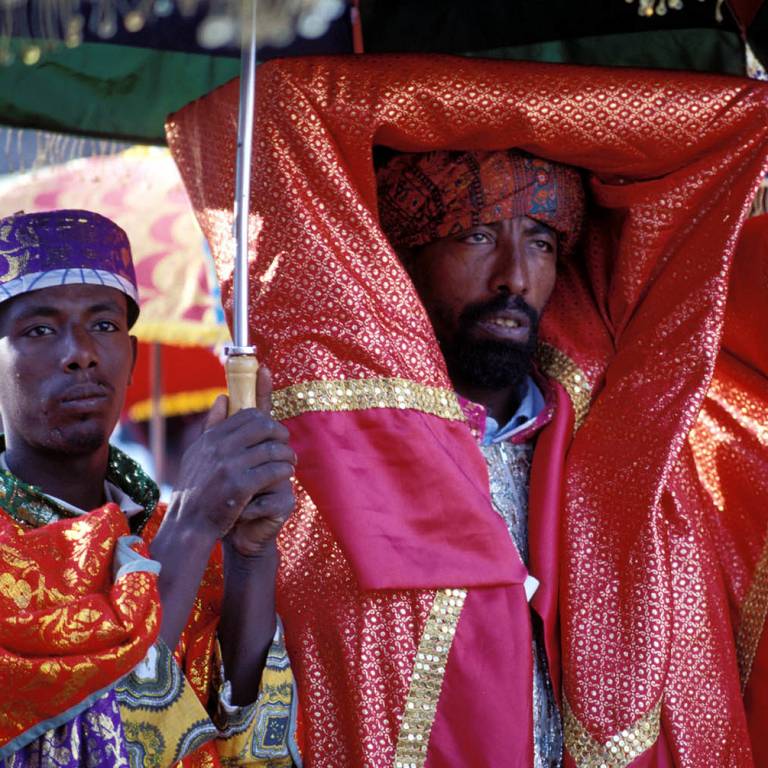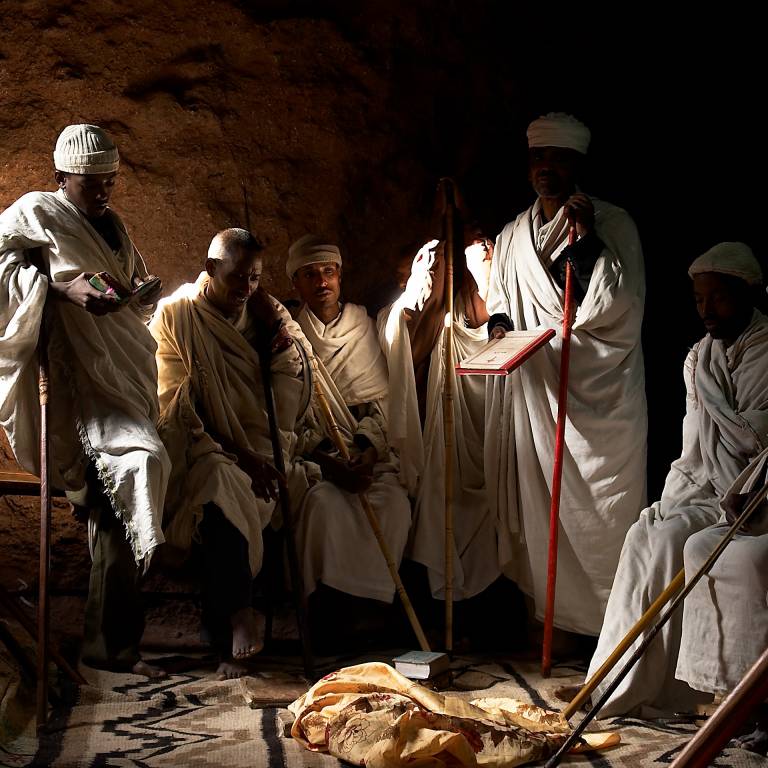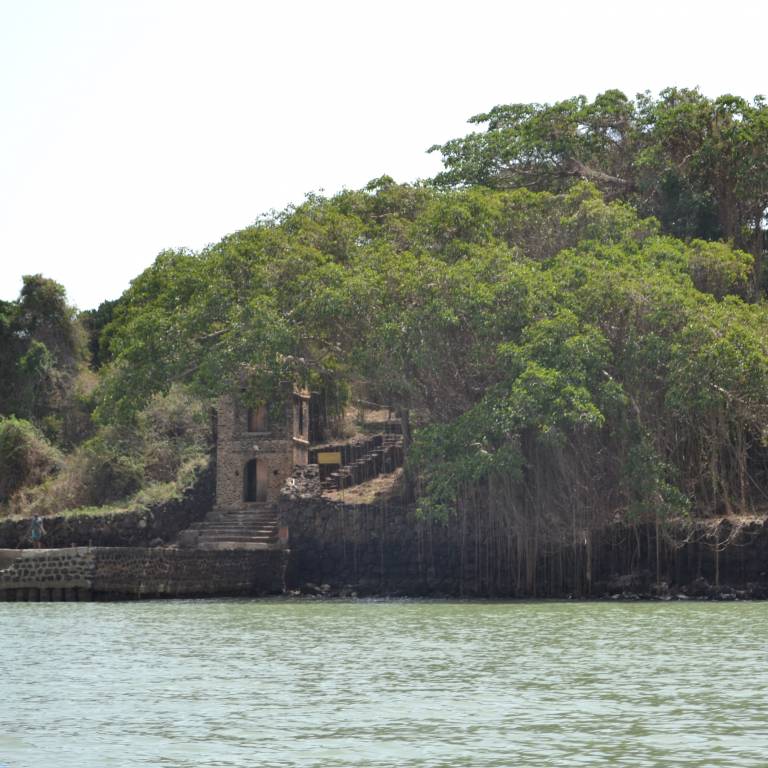Centres of Spirituality

Fig. 2.1. Celebration of Ṭǝmqät in Gondar (CC: Jialiang Gao).
For Ethiopian Orthodox Christians their faith is central to their everyday lives. The Church is at the heart of worship, especially on Sundays and feast days. There are many large and colourful religious feasts in the ecclesiastical calendar year, including the Finding of the Cross (Mäsqäl), Christmas (Lǝdät), Epiphany (Ṭǝmqät), and Easter (Fasika). There are also annual and monthly feasts dedicated to St Mary, the angels, saints, and martyrs.
Many of these feasts are preceded by fasting seasons, which take up nearly 200 days of the year, and involve liturgical services, procession, and pilgrimage. Pilgrims travel to famous historical churches and monasteries dedicated to a holy person. Important destinations include Aksum, Lalibäla, Gǝšän Maryam, Gondär, Kullubi Gäbrǝʾel, and the monasteries of Lake Tana.
Repositories of Knowledge & Art

Fig. 2.2. Clergymen consulting books in Lalibäla (CC: Stefan Gara).
In Christian communities in Ethiopia, especially in rural areas, churches function as important centres for the religious and secular lives of the people who live in their proximity. Here a child may attend reading classes, a youth may come to know their future husband or wife, adults may settle their feuds and land disputes, the homeless and sick may take shelter, and so on. The churchyard is a space where people may find solace from some of their troubles or where they remember their loved ones buried there.
Some Ethiopian churches are also sites where ancient wall paintings are preserved alongside illuminated manuscripts, processional crosses and holy vessels. These buildings may thus serve as the physical and emotional repositories of the memories, history, art, and knowledge of their parishioners.
Sites of Biodiversity

Fig. 2.3. Entrance to the church of Narga Śǝllase (© Jacopo Gnisci).
Visitors to northern Ethiopia often notice dense forest surrounding churches on many of the hilltops in an otherwise treeless landscape. In the central and northern highlands of Ethiopia the grounds of churches and monasteries are among the few sites that maintain native forest biodiversity. Because this land is viewed as sacred, these church forests provide precious and safe habitats for many endangered species. They can thus be viewed as important storehouses of genetic diversity and natural museums offering evidence of the type of vegetation that once covered their surrounding areas.
Some church forests have been preserved for centuries. They provide tranquil spaces for prayers, they shelter the church and its saints, and Christians view them as symbols of the Garden of Eden and as evidence of the life-giving nature of faith.
 Close
Close

